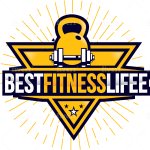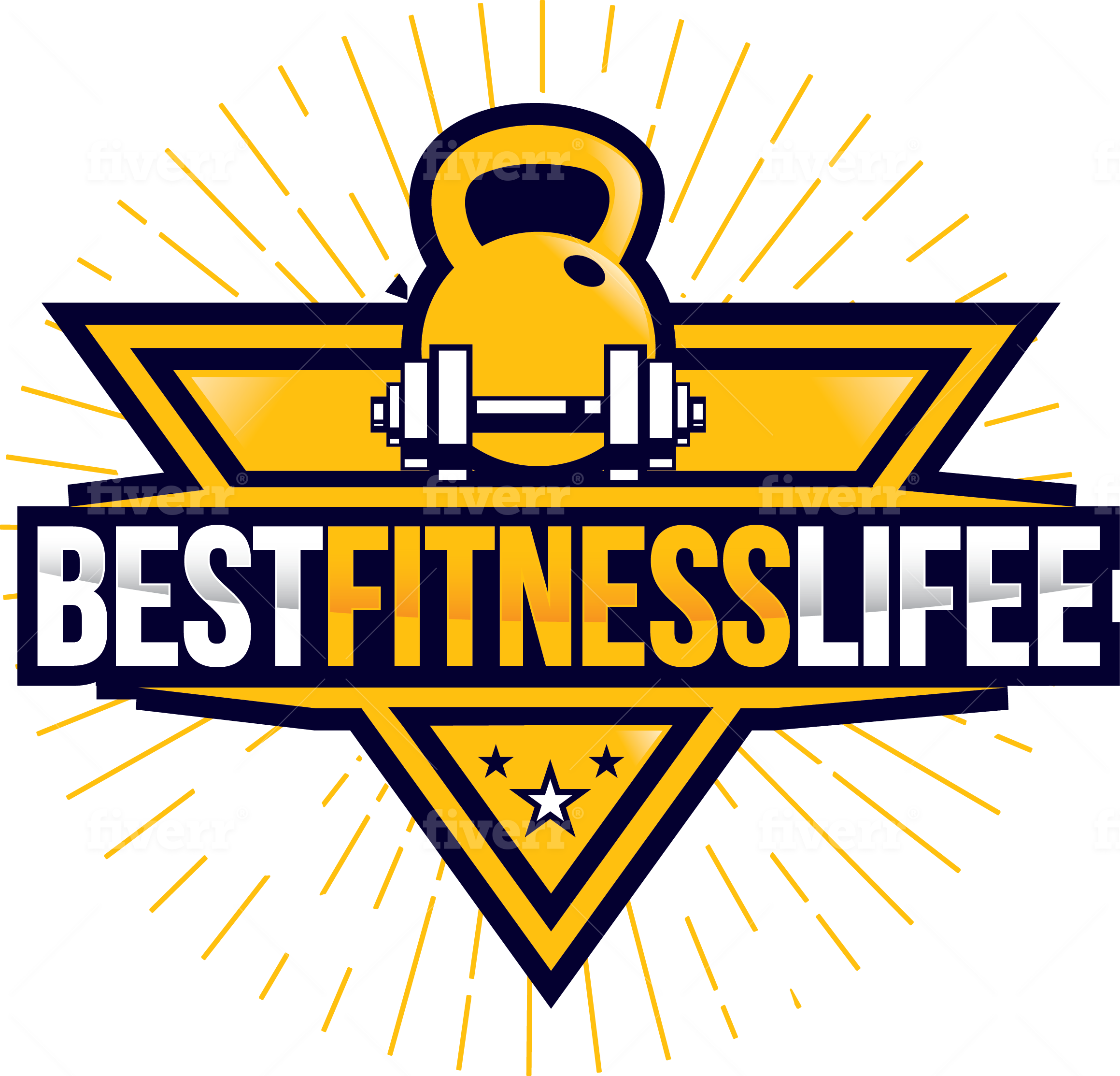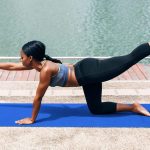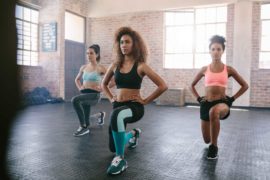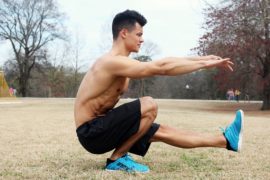Running is one of the aerobic sports par excellence.
It is a simple and inexpensive activity that practically everyone can have access to, adapting it to our age and physical condition.
The way the athlete exercises reflects his tastes, his passions, his way of relating to his body and even his personality.
There are those who choose to exercise in the park, on the beach, on courts, in gyms or simply on the streets.
There are those who choose conventional sports and those who seek to innovate in new disciplines.
Running is a pleasant, reassuring, healthy and cheap sport.
You can enjoy the scenery and fresh air while your heart and lungs work hard.
In addition, running brings many benefits to our body, one of the secrets of its success.
At the joint level, and based on the fact that ours are in good condition; Running will lubricate and make our joints more flexible, provided that we do it regularly and in moderation and that at the end we perform stretching exercises correctly.
Aerobic work improves blood circulation and blood oxygenation.
It also expands the ability to burn stored fat.
For people with coordination or balance problems, running can be a good way to gradually improve these senses.
Running long distances is very effective in preventing hypertension, increased cholesterol, and diabetes.
We hope that this guide is very helpful to inform you and motivate you to immerse yourself in the path of running.
Good Reasons to Run

There are runners in their sixties and maintain athletic bodies that are the envy of people who do not reach 30.
It is not just an impression, or isolated cases, there are studies led by experts that confirm that running reduces the physical and psychological decline of old age by up to 50%.
According to published clinical studies, for example in one of them, with two groups of people, one of runners and another who was not physically active, this was confirmed.
The group of non-runners suffered from degenerative, cardiovascular and cancer diseases in a much higher proportion than that of runners.
When both groups reached the age of 70, runners were able to carry out all daily activities much more easily and normally than non-runners, who had difficulties of all kinds to cope with a normal life.
Upon reaching 80 years, mortality in the group of non-runners was 42%, while in the group of runners it was not 10%.
Life Saver
The relationship between the risk of heart attacks and angina pectoris with the diameter of the waist has been verified.
A person with a flat stomach minimizes the chances of having a heart attack.
Running is the cardiovascular exercise that consumes the most calories and therefore the best way to keep your stomach flat and avoid heart disease. You can also do this in the gym because weight lifting is also beneficial that requires you to lift dumbells.
Stronger Muscles and Bones
When no effort is required, our muscles and bones easily adjust to sedentary life.
Without exercise, our bones and muscles progressively weaken and deteriorate.
A medium-high intensity physical activity, like the one that involves running several days a week, helps to strengthen not only the muscles of the lower body, but the entire skeleton.
Physical activity activates growth hormone, keeping it at levels similar to those of a young person, helping to regenerate our body.
Prevent Diseases
Running increases good cholesterol and reduces the risk of clots; improves the efficiency of the lungs by approximately 50% more than that of sedentary people.
In the United States, it is prescribed to run those patients with osteoporosis, hypertension (associated with one of the leading causes of death in the West) and diabetes, as well as to reduce heart attacks.
Running increases good cholesterol and reduces the risk of clots; improves the efficiency of the lungs by approximately 50% more than that of sedentary people.
Running maintains the elasticity of the arteries, protecting the body from bad cholesterol and arteriosclerosis, since when you run, your arteries expand and contract at a rate 3 times greater than if you do not exercise.
Running enhances the immune system by creating a higher concentration of lymphocytes, white blood cells, that defend our body from disease.
Improve Self-Esteem

Running builds your self-confidence and self-esteem more than any other sport, since it is the one that more easily allows you to check day by day how you are overcoming obstacles and improving marks.
Going through challenges and breaking down barriers, seeing weekly progress and recovering your figure, helps improve your self-esteem and confidence.
Stress is the great entity associated with suffering from other diseases.
The great benefit of the race may be the discharge of energy and the elimination of accumulated pressures and stresses.
If emotional and environmental tensions are reduced, the possibility of suffering diseases is removed.
Flexibility is life and rigidity is death.
A baby who begins to live is completely flexible, while an older person becomes rigid.
Running helps improve flexibility and helps enhance coordination, two fundamental elements to guarantee a comfortable and self-sufficient life at advanced ages.
Positive Attitude and Mind Strengthening

The generation of endorphins (the hormone of happiness) helps you see life more positively.
The improvement of the physical aspect in general, and the generation of endorphins, help to improve your attitude towards life, the way you face new problems and the setbacks of everyday life.
You accumulate more positive energy to face life.
With a much more cheerful and optimistic attitude, the challenges begin to be overcome. There are no barriers that are imposed between your objectives, you can with everything.
Running long distances near the fatigue threshold helps strengthen your mind, empowers your determination, and improves your discipline.
When the body feels fatigued and asks for rest, but you keep running until the end of the training, not only do you improve physically, but values such as perseverance, discipline, and effort take on meaning and are part of your life.
Food and Hydration

Eat meat and dairy products, cereals, vegetables and fruits regularly and with discretion, which will provide your body with the proteins, fats, carbohydrates, vitamins and minerals that it needs to stay in good condition.
After meals, much of the blood volume goes to the digestion processes.
It is very important to respect a fast time (2 to 3 hours) before physical activity, since otherwise we would “steal” part of the blood destined for the muscles.
On the other hand, food increases the movements of the stomach and intestine, causing annoying disorders during exercise (nausea and vomiting).
The amount of blood that reaches the kidney will depend inversely on the intensity of the exercise.
The harder it is, the less blood will go to the kidney for the benefit of the muscles, and as a consequence there will be less urine production (it will be more concentrated).
In this way, the kidney tries to decrease the loss of water, which is very important through sweat.
Despite this, the body has a tendency to become dehydrated, which affects physical performance, and may even damage some kidney structures.
Therefore, in long tests, it is very convenient to drink periodically, and even without being thirsty.
It is important to consider that as physical exercise is performed, fluid is lost, and the more exercise is performed, the more fluid is lost.
The consequence of this is that if the lost liquid is not replaced, the person becomes dehydrated and their performance decreases.
Liquid loss has certain effects depending on the percentage of weight loss.
Loss percentage (Weight) Effect
1% Thirst sensation threshold.
2% Very thirsty, loss of appetite.
3% Dry mouth, increased hemoconcentration, decreased renal excretion.
4% 20-30% reduction in physical performance.
5% Difficulty concentrating, headache, impatience, sleep.
6% Severe alteration of thermoregulation, increased respiratory rate during exercise, tingling, and numbness of the limbs.
7% Possible collapse if combined with heat.
Before training it is recommended to drink 500 ml of water or isotonic drink 2 hours before and 125 to 250 ml just before starting the exercise.
During exercise 125 to 250 ml of water or isotonic drink every 10 to 20 minutes.
At the end of the exercise, replace 150% of the lost liquid, drink 500 ml immediately after the exercise.
The rest to suit the athlete.
Finally, remember to hydrate before you feel thirsty.
If your mouth feels dry, you’ve probably already lost 3% of your body weight, and your performance will have decreased dramatically.
Routine, Place and Climate
Establish a routine, if one day you run in the morning, the next at noon and the other at night, you are not creating a routine.
Run a minimum of three times a week to create the habit and alternate one day of exercise with another day of rest whenever possible.
Running will make you feel full of energy and take away your sleep, it is important to rest even if it is difficult to fall asleep.
You can freely choose where to run, in a park or in the city.
Pay attention to the ground surface for possible accidents.
The grass is very soft and cushions the blows but it is dangerous because it can hide unevenness, wells, sticks, etc … these irregularities can cause you to fall, twist and injure yourself.
The brick dust and dirt surface is harder but less prone to accidents.
The pavement and asphalt are among the hardest and smoothest, their disadvantage is that the legs suffer.
Running on the track is the best solution, but you can get bored soon.
Change the direction of the route, also change the direction of the slopes.
If you choose a secluded spot, think you may have a sprain and find yourself far from help.
In mountainous terrain the speed decreases.
In cold climates take precautions with ice on the way.
In rain protect yourself from lightning and slippery ground, wear waterproof clothing and the necessary clothing to maintain body heat.
The displacement when running increases the cold-wind effect and the risk of freezing.
Protect normally exposed body parts, hands, head, ears, face, feet, using clothing that provides thermal insulation.
When it is very hot be careful, cover your head and protect yourself from the sun and UV radiation, hydrate well before, during and after exercise.
Wear light and breathable clothing, that will reduce your body temperature.
It takes a few days for your body to adapt to the heat, it sweats more and loses more fluid, the heat also hinders the circulation of the blood with the consequent damage to the heart.
Heat can cause a sharp drop in blood pressure and exhaustion, if this happens stop running immediately, seek shade and drink warm, non-alcoholic liquids and rest.
If symptoms persist, call your doctor.
Running in strong winds increases oxygen consumption by 6%, reduces speed and you will get the same benefits as running faster, start the journey facing the wind so that when you are tired you have the wind at your back.
When running in height from 1500 meters above sea level, the blood absorbs and transports oxygen slowly, the heart will work harder.
The organism needs more than a month to adapt, it reduces the effort 50% or more even if necessary.
Heart rate
A person’s maximum heart rate is the number of heartbeats per minute when their body is under maximum effort.
His maximum heart rate 220 – (his age) gives him approximately his HRmax.
If you are 20 years old this will be 200, in the case of women (210 – age).
This formula was developed according to proven fact.
For every year lived, your heart beats once less per minute, with a tolerance margin of +/- 5 beats.
The ideal heart rate is the key to physical conditioning. During the execution of an exercise, the heart rate should be 75% of this maximum.
To reap the cardiovascular benefits of exercise, you should keep your heart rate between 70 and 85% of its maximum for 15 to 20 minutes.
If your heart rate is below 70% of the maximum, it will not improve the state of your cardiovascular system, if you exceed 85% of your maximum, you are exceeding your resistance limit.
The simplest way to measure beats per minute is by feeling the pulse of the radial artery at the wrist, near the outer edge and base of the thumb, where a kind of channel is found between the bone and the tendon of the thumb.
To palpate, use the pulp of the index and middle fingers of the hand where the watch is held and count the number of beats, using a stopwatch or the second hand of your watch for 15 seconds, then multiply the number by 4 obtained to know the number of beats per minute.
Warm-Up Exercises 1
The runner who is used to physical activity is better prepared to withstand the effort of the race.
You should take 10-15 minutes before exercise to loosen and relax muscles, prepare your lungs, heart, tendons, and joints.
Many injuries and pain can be avoided by warming up.
The warm-up should affect all parts of the body and keep it flexible.
The warm-up exercises will take approximately 10 minutes.
Exercise 1
Standing, stretch your arms well and place your hands on a wall or base, and placing one leg in front of the other. Maintain 30 seconds per leg.
Exercise 2
Standing, stretching your arms and holding your hands on a wall or base, with your legs apart and slightly flexed in front of each other.
Hold 15 seconds for each leg.
Stretching and pressing the back leg, without lifting your foot off the ground.
Exercise 3
Standing, place your hands on your waist and raise one slightly flexed leg on a base in front of your body. Recommended time: 20 seconds for each leg.
Exercise 4
Standing, raise one of your legs to the front and on a base, in a straight position (without flexing, to achieve a good stretch of it). Recommended time: 20 seconds for each leg.
Exercise 5
Always standing, we will maintain a posture similar to that of the previous exercise, but this time you should try to raise your leg to one side of your body creating a 90-degree angle and place it on a base for 30 seconds. Then change legs.
Exercise 6
Standing, bend one leg back and hold it in your hand for 20 seconds. Then switch legs and do the same for another 20 seconds.
Weight Loss and Running

Running is one of the most effective methods to lose weight with health and also with lasting effects.
To do it correctly, here are the keys to lose weight running.
Running is one of the most complete forms of exercise there is.
Also, if the exercise plan is accompanied by a healthy diet and lifestyle, it is possible to lose weight by running.
However, it can also be a dangerous form of exercise, especially for people with heart problems or excessive obesity, so it is recommended to start slowly and, if possible, follow the advice of an expert or a coach. personal.
Running is a very cheap and simple way to lose weight and eliminate those extra centimeters in the abdomen.
To burn the maximum, what you have to do is that your body does not get used to the same training.
A common mistake is to always do the same thing: the same distance, the same route and at the same pace.
This is perfect at first, because it gives you security, but then you have to take a step forward and change the routine.
If we always do the same training time, at the same intensity and with the same volume, the body adapts to that type of effort and that makes us spend less.
Varying our workouts will be one of the key factors for our success, with series and rhythm changes you will burn more calories again, in addition to training better and getting faster.
Doing other sports or exercises complements our training to reach the desired goal, of course, diet also plays a very important role.
Something very positive is that the metabolism increases remarkably with exercise, so even after you have finished exercising, you will be burning more calories than you usually burn.
The weight loss process is different for each person; It will depend on age, metabolism, sex and different causes, so it is necessary to consult a doctor who specializes in nutrition.
Keeping in touch with nutrition specialists will be a safe bet to keep our body controlled. With a healthy diet and an exercise routine adapted to our needs, it will favor a controlled weight loss that will not cause imbalances that affect our health.
SOME TIPS TO LOSE WEIGHT WHEN RUNNING:
-Not stop eating: Running and stop eating or eating less is a bad combination and very negative for health.
-Hydrate yourself well: Try to drink at least two liters of water a day.
Running makes us sweat and good hydration is needed for our body to function properly.
-Not running warm in hot weather: It is very dangerous, we will only manage to dehydrate, lose water and mineral salts that our body needs for its operation.
– Rest: Not by going out every day of the week we are going to lose more weight, we must recover.
We must avoid overtraining and injury.
-If we can’t keep up, we have to walk.
-Increase the pace: We can do some series a day a week.
For example: 3 or 4 series of 1500 meters with a minute of rest between each of them; Or, alternate 1 kilometer at the usual pace with another kilometer, improving this pace in 5 or 10 seconds.
-Kilometers daily in two sessions: Although it takes longer, it is easier to run 10 km in the morning and 5 in the afternoon, than to do 15 km at once.
Apart from the psychological and physical benefit, two metabolic elevations are also achieved, that is, two times of the day in which the metabolism is increased and more calories are burned.
-Compensate the extra calories: If one day it is impossible to follow the diet, we must compensate by increasing the smooth running time.
It is not recommended to eat less the day before or the day after so as not to unbalance the metabolism.
-Five diet meals: Respect all meals and do not let more than three hours pass without eating food.
-Fruits: Eat 3 to 5 small pieces of fruit or a banana.
-High Metabolism: To keep the metabolism high for more hours it is good to change intensities when running.
-Patience, think in the medium term: You should not be obsessed with weight when you lose weight running, the important thing is to lose fat.
At first, you may gain weight, because muscle weighs more than fat.
Ideal Running Shoes

The choice of shoes is essential and will help us prevent the appearance of blisters, as well as sprains and possible muscle injuries.
We must equip ourselves with a pair of shoes that adapt well to our feet.
In addition we must choose a good pair of socks, which absorb moisture and keep feet dry.
Some come with antibacterial treatment, anatomical design for the right and left foot, with reinforcement in the pressure zones and with support on the footbridge to offer a firm, stable and low friction fit.
When running, the foot swells and slides forward several millimeters, even one centimeter, if we choose the right shoe size at rest, after several kilometers running we can hurt ourselves.
If we choose a very loose size, this will cause chafing and we may get blisters on our feet.
Approximately half a centimeter or a centimeter should be left between the longest toe and the toe or the foot should be brought forward and a toe should be inserted into the heel part.
Weight matters, above 80kg we should opt for good cushioning, with a harder foam midsole and additional cushioning technology in the heel and toe.
The shoe must adapt to the terrain in which we are going to practice the exercise.
Benefits of Running
It is an aerobic activity suitable for everyone and easy to carry out since we only need good shoes and comfortable clothing.
It is one of the aerobic disciplines that spends more kilocalories from fats.
The respiratory system will be more effective.
Decreases the risk of contracting cardiorespiratory and metabolic diseases.
It is a key factor in the prevention of obesity, it changes the basal metabolism, which makes it difficult to regain the fat weight.
It reduces anxiety and regulates appetite.
Increases the general feeling of well-being due to the released endorphins.
It allows establishing socio-affective bonds improving self-esteem.
Collaborate with muscle toning.
Improve rest.
It reduces stress and improves psychic health.
It helps prevent the appearance of Osteoporosis.
It balances and normalizes the insulin level.
Strengthens the immune system.
It decreases the chances of suffering from Alzheimer’s in the third age.
In addition to having a stronger heart, the body of runners is usually thin.
Running gains both physical and mental endurance and recharges energy.
To lose weight running is not enough, losing kilos and keeping weight depends on the proper balance between calorie intake and energy expenditure, in other words, between food consumed and physical activity.
During physical activity the body consumes energy; In the first half-hour of sustained running, the body takes calories from the food provided, when it ends is when it begins to consume accumulated fat, that fat is energy in reserve and available to be consumed when the requirements of muscular efforts request it.
If your weight is excessive, running will help you burn calories but will not solve the problem.
